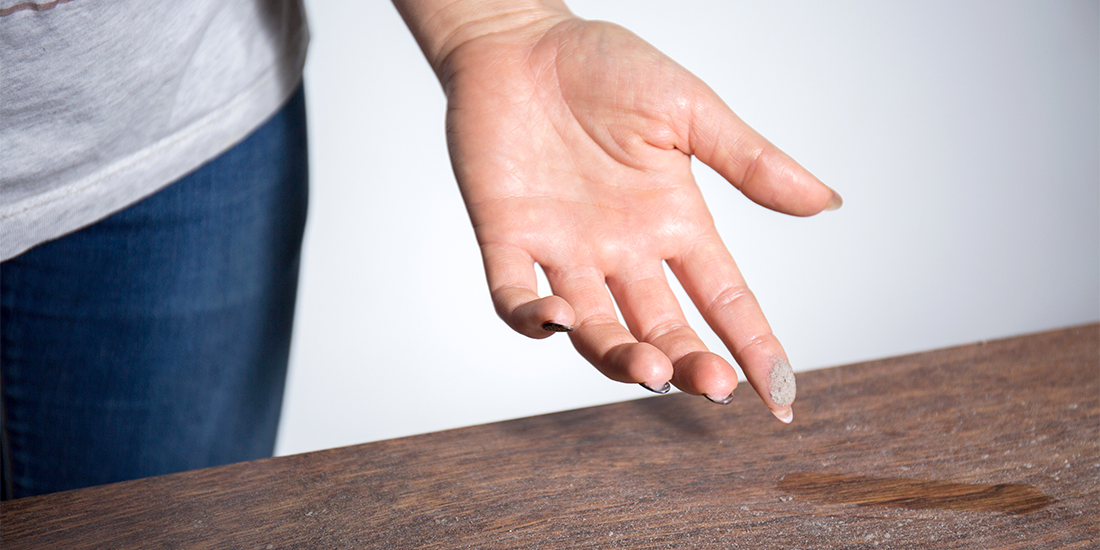
Q: There are tiny specks floating around in the air in my house. I can’t pick them up with a vacuum cleaner, and they aren’t settling. It’s like my house is haunted. What are these things and how can I get rid of them?
A: Don’t freak out, they’re not ghosts. They’re dust particles.
But there is some cause for worry. Tiny particulates can contain remnants of toxic chemicals, paints, and outside dirt tracked in on feet, paws, clothes, or your own DIY projects. While not necessarily posing an immediate threat, they can have negative long-term health consequences. And there’s a lot of them, everywhere.
This isn’t what you want to hear, I know. But your awareness can make a world of difference for family and friends with respiratory conditions or sensitivities. The good news is you may all be able to breathe easier by improving your home’s indoor air quality. There is a whole host of things you can do to make this happen, but let’s start with a few simple tips to bust the dust:
- Get rid of excessive clutter. Dust lands on and floats off surfaces of all kinds. If you limit the number of surfaces, there will be fewer places for dust to accumulate.
- Vacuum regularly and use a wet mop immediately after. Sadly, vacuuming alone is not enough to capture and remove dust.
- Clean and change bed linens more often. Wash weekly with hot water.
- Incorporate nontoxic products wherever possible. This will reduce the airborne chemicals that combine with dust.
- Upgrade your doormats. A high-quality doormat can make a big difference. If you take shoes off at the door, you’ll track in less dirt and dust, too.
- Dust (verb)! Regularly with a damp cloth. Start from the highest point and work your way down. In a kitchen, you can start at the top of window blinds, or the top of the refrigerator. In a bedroom, you might sweep the corner ceilings for cobwebs and dust, then move to the top of a bookcase, dusting each shelf (and object) from the top one to the bottom.
- Control your own dust. If you are handy at home and have ongoing dust-generating projects, we have a video tip from our own Master Carpenter Jeremiah, who shares how not to spread dust when drilling.
These tips don’t cover every aspect of dust management, but if you follow them, you’ll see fewer particles and improve your overall air quality—as well as the experience of people living or staying under your roof.
A word on remodels. By nature, remodel projects of all kinds introduce more dust into a home. Not only are there new products, chemicals, and materials, there’s also a lot of sawing, drilling, grinding, cutting, sealing, spraying, and similar work onsite. Ongoing preparation, containment, and monitoring are essential for safety. I recommend that you ask your site contact about air quality before, during, and after the project.
For those of you living onsite during a remodel project—or thinking about it—be aware that there will be significant dust. To mitigate this, make sure that the project is sealed off from your living area. Have your contractor or project manager walk you through the site frequently to make sure dangerous particulates aren’t invading your home.
Paul Kocharhook is the owner of Pathway Design & Construction, a member of the Master Builders Association of King and Snohomish Counties (MBAKS). If you have a home improvement, remodeling, or residential homebuilding question you’d like answered by one of MBAKS’ more than 2,700 members, write to homework@mbaks.com.